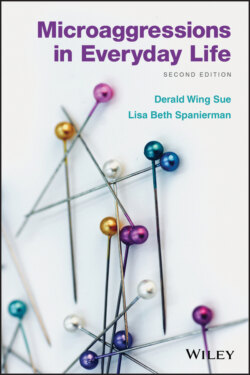Читать книгу Microaggressions in Everyday Life - Derald Wing Sue - Страница 27
Conscious and Deliberate Bigotry versus Unconscious and Unintentional Bias
ОглавлениеPeople who are aware of their racial, gender, and sexual‐orientation biases, who believe in the inferiority of certain groups, and who discriminate when the opportunity arises have been labeled conscious‐deliberate bigots (D. W. Sue, 2003). In the area of racism, for example, they vary from people who privately harbor racial animosity but do a good job of concealing it, to those who are more overt in expressing their biases, and finally to those who might be labeled White supremacists. In most cases, conscious‐deliberate bigots are held in check by legal, moral, and social constraints. These individuals form a small number, although they have great public impact. In an August 2017 Marist Poll, researchers found that only a small proportion of Americans “mostly agree” with beliefs of the alt‐right (6%), White nationalists (4%), the White supremacy movement (4%), and the Ku Klux Klan (2%). During the same month, White nationalists organized a rally to “Unite the Right” in Charlottesville, Virginia. Several hundred people from various White supremacist groups wielded tiki torches during an evening march to protest the city's plan to remove Confederate statues. Notably, a far greater number of counterprotestors (estimates of 2,000–8,000) showed up for the main event the following day to express their opposition to fascism and White supremacy. There were physical altercations, and, regrettably, someone was murdered. White supremacist James Alex Fields Jr. drove his car into the crowd, killing a racial justice counterprotester, 32‐year‐old Heather Heyer, and injuring 35 others, according to reports. In his response to the events, President Trump condemned “hatred, bigotry, and violence on many sides,” further emboldening the small number of White supremacists in America.
Many multicultural scholars believe it is easier for people of color, sexual minorities, and women to deal with overt and deliberate forms of bigotry than with subtle and unintentional forms, because no guesswork is involved (Dovidio & Gaertner, 2000; Hebl, Foster, Mannix, & Dovidio, 2002; Salvatore & Shelton, 2007; D. W. Sue, 2003; Swim & Cohen, 1997). Subtle and unintentional forms of discrimination may be more harmful for targets because subtle discrimination is more frequent than overt forms, thus presenting as a chronic stressor (Jones, Peddie, Gilrane, King, & Gray, 2016). It is the unconscious and unintentional forms of bias that create the overwhelming problems for members of members of marginalized groups in our society (D. W. Sue, 2003, 2005).
